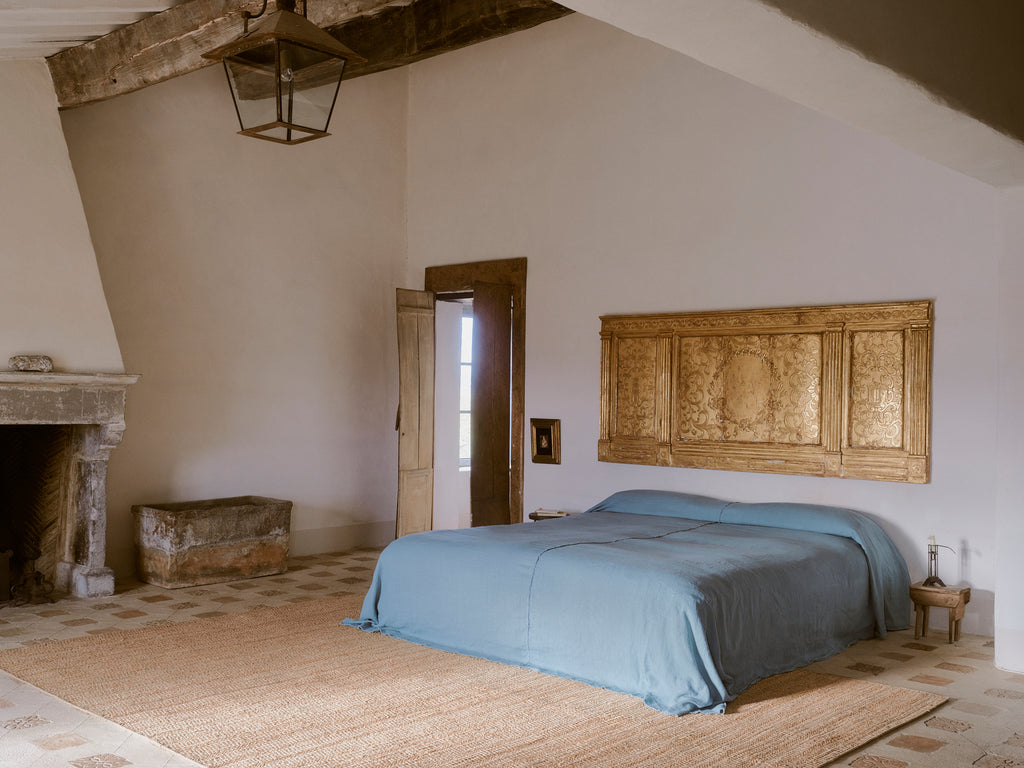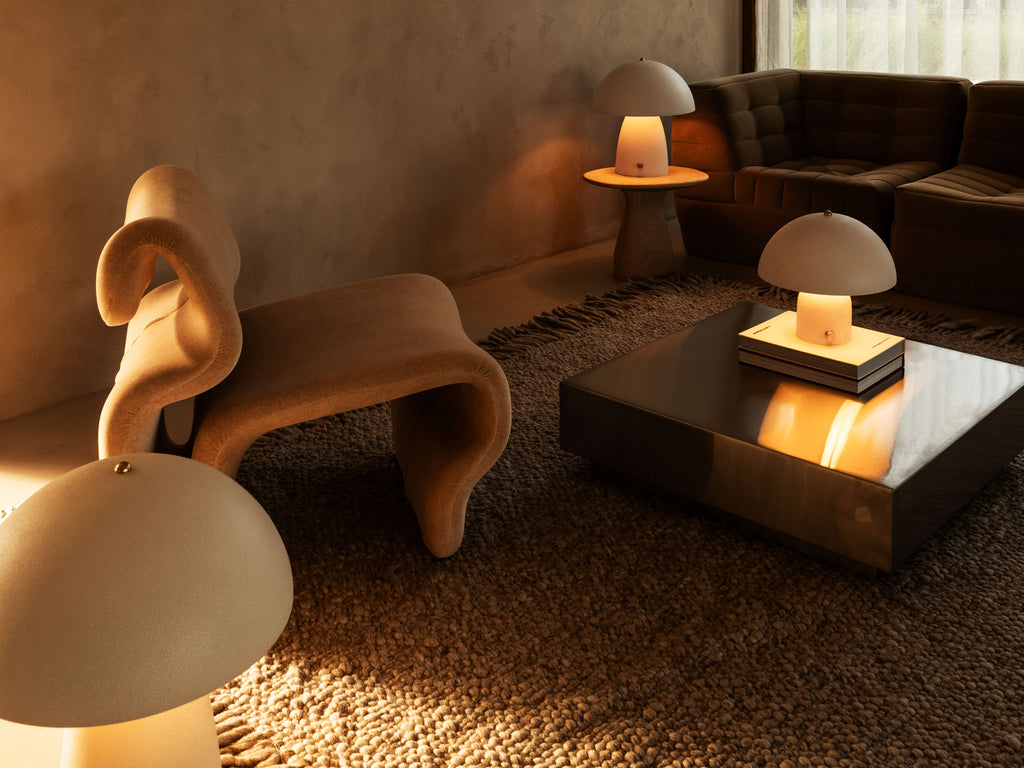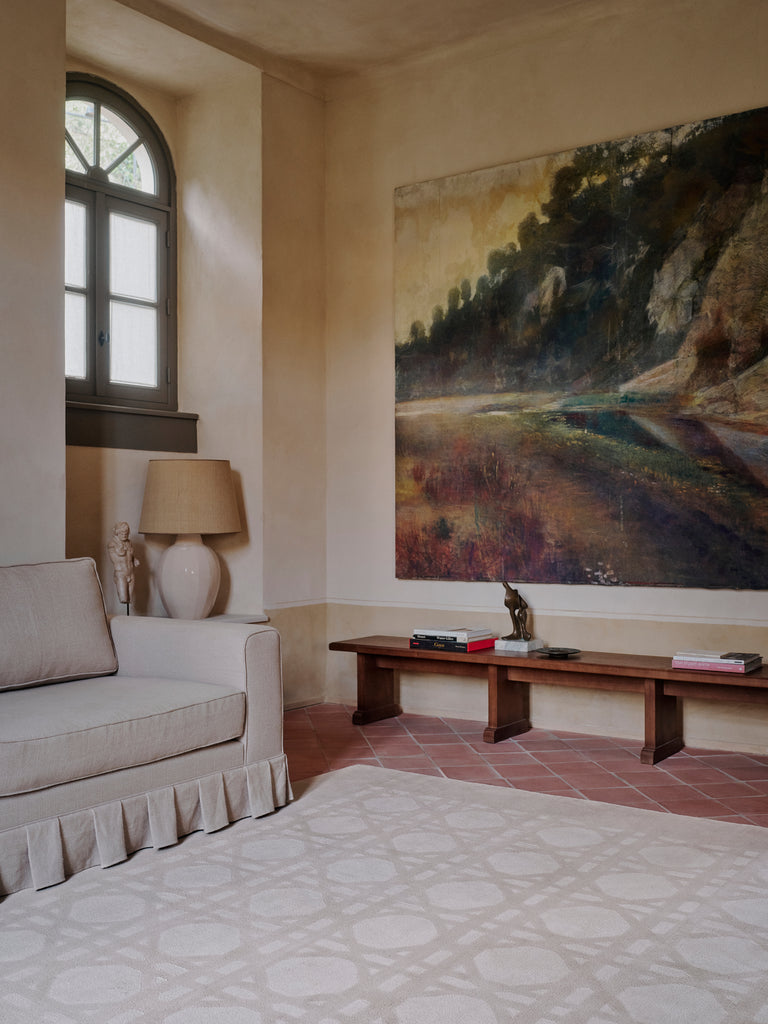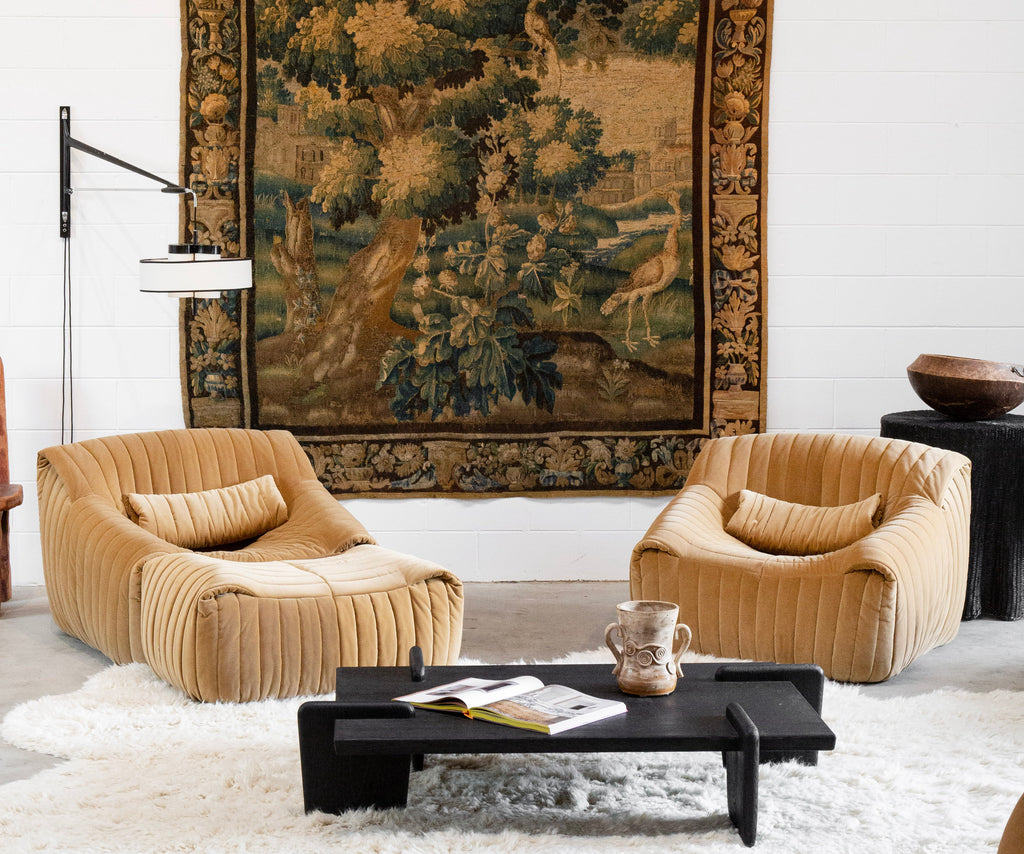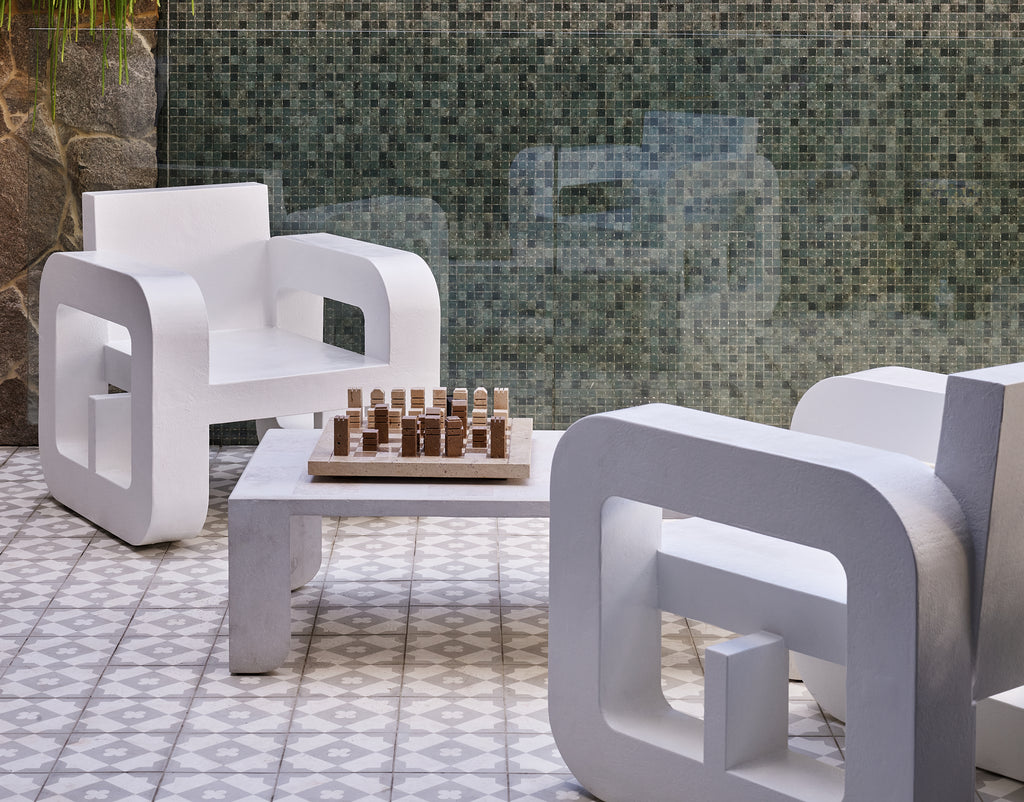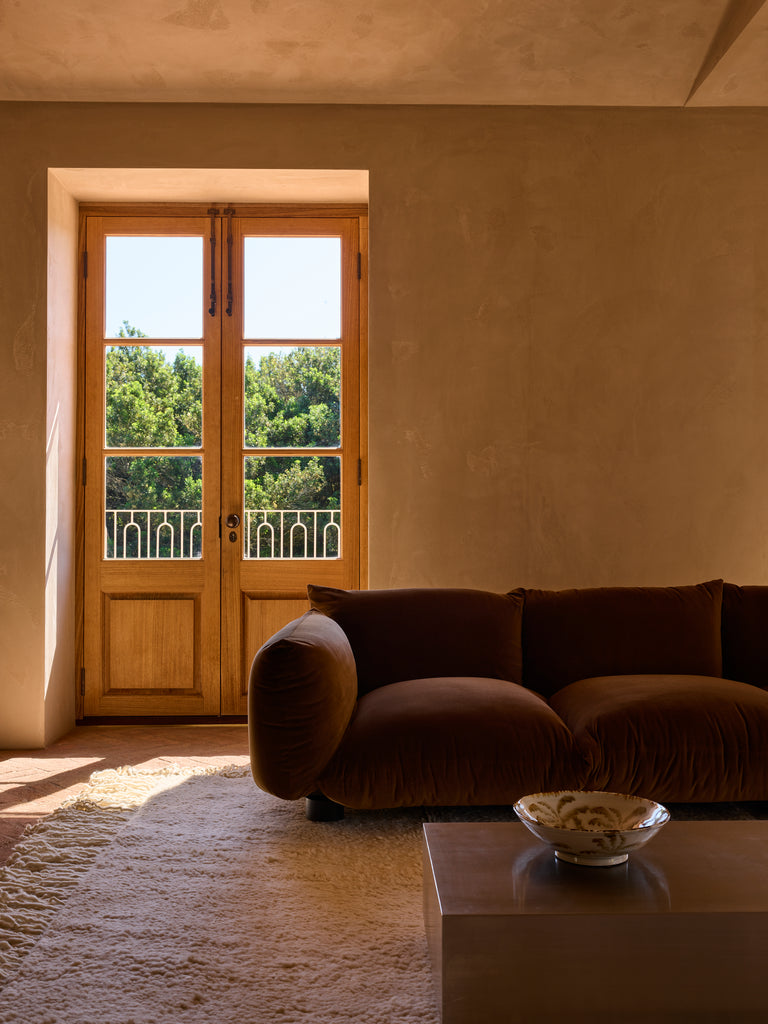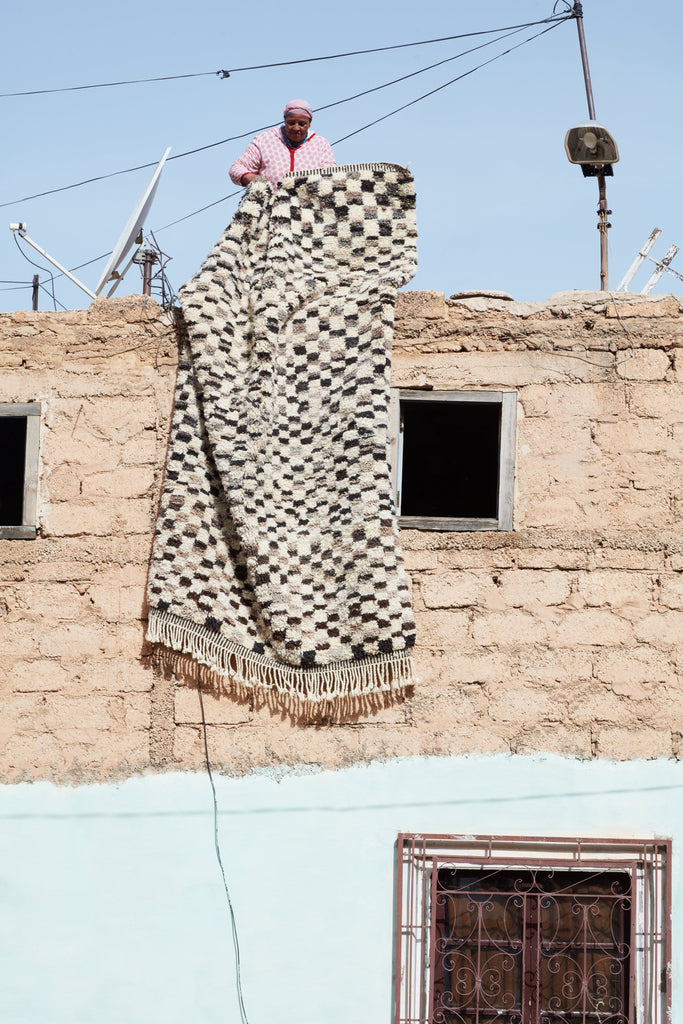
Tête-à-tête
Ceramic Art Series
In the next instalment of our Tigmi Art Series, we present our first ceramic art show, that showcases the unique and beautiful work of four talented Australian Ceramic Artists - Coe Studio, Jan Vogelpoel, Lisa Lapointe & Softedge.
Speaking to them about the curated collections they have selected for the exhibition, we gain some insight on their different creative processes to their shared medium.
COE STUDIO
What is your earliest memory of creative exploration?
On country, Anangu land, when I was four my family and I were travelling in the outback of Australia. I vividly remember hovering over the dried cracked mud of the earth and making shapes and patterns out of the textured ground. It was one of my favourite things to do when we had stopped on the side of the road, or if I thought we had been exploring one location for too long. I’d always go back to the earth.
What most appeals to you about ceramics?
The tactility of clay and the experience of being the tool. I can go for hours in a sense of calm, a mediative state, transfixed in exploring the ever-shifting material. When I experience this flow the forms and lines of the day usually appear in my mind’s eye as I slip off to sleep. Bliss!
Talk to us about your inspiration behind this ceramic curation and what techniques have you explored?
I created these works during the recent floods, in which our communities were stretched and tested to their limits. This body of work is inspired by the emotions that have been felt collectively as a result of this tragedy. From the immensity of the water to the damage and the aftermath. My biomorphic forms are emblematic of humans coming together and are shaped by the convergence of nature’s forces and human resilience. Created by hand using traditional coiling techniques, they are then glazed in one of my signature glazes ‘mud crackle glazes’, which I find fitting because when the water subsides, the mud remains.
"I’d love to think that my works could be handed down through generations and live through different periods of design."
What does your creative process look like at the beginning, middle and end?
It depends because my creative process varies depending on the type of work I’m doing. For me beginning with play is a great place to start, this gets the creativity flowing. Whether I’m hand forming, wheel throwing or slip-casting I’ll create a series of maquettes to refine a design in the pre-production phase. This process is a must for commissioned based projects, it gives the ideas space and time to evolve on a small scale.
What do you hope your work adds to the homes they are destined for?
I hoped to create thought-provoking conversation pieces that can coexist and complement the interior that they dwell in. I’d love to think that my works could be handed down through generations and live through different periods of design.



__________
Jan Vogelpoel
What is your earliest memory of creative exploration?
As a child as I was constantly creating: painting my bedroom walls, crafting, painting, sewing, making, building, designing, drawing. A little obsessed with creating. Looking back I think I may have had a form of ADHD; Lying awake at night with ideas flashing through my mind - so many techniques and concepts to explore.
Talk to us about your inspiration behind this ceramic curation and what techniques have you explored?
In this body of work I wanted to explore the past (The Source), the future and time itself.
Acknowledging the past that exists in the present, imagining the future. Objéts inspired by the past for the future. I use the coiling method for my sculptures which is a very old technique that has been used to shape clay into vessels for many thousands of years. I build my tiles using slabwork and then make a mould. I’ve done loads of experimenting with the tiles and they tend to crack in the kiln so the only way around this is to make a mould of the tile. Its quite a long process but its worth it! Once the mould is dry, I press clay into the mould then after some drying time, release the clay and start refining the design then allowing it to dry very slowly to avoid cracking.




What does your creative process look like at the beginning, middle and end?
I usually start a new design with an inspired idea; I would say I am mostly inspired by architecture. I sketch out a few ideas and then I build from my sketch, which doesn’t always work out because proportions and scale can be tricky but mostly it just flows and I get completely lost in the process.
It’s a beautiful thing - I can build for hours and it feels like minutes. I enjoy designing pieces that work together, two or three that have a connection and tell a story. Seeing a new form develop is so rewarding. I build using hand rolled coils and depending on what I’m building, a piece can take around half a day to two days, and sometimes more. When the clay has firmed up and dried out for a day or two I then refine and shape, constantly watching over them during the drying stage and make little refinements along the way. Once they are completely dry I finesse a little more and carefully pack them up to deliver them to the Kiln Room, where Pie Bolton magically fires them. There's always that feeling of anticipation hoping for a successful firing. After a few days I pick them up, and once home I seal them, photograph them and pack them up so they can head off to their new homes. Kiss them and wave goodbye! I have a connection to every piece, we’ve spent hours together and it's often difficult to let them go!
What do you hope your work adds to the homes they are destined for?
I like to think my work makes a statement in a room, a strong presence that doesn’t challenge but offers a quiet confidence that whispers at a strong design aesthetic and a connection to the past, present and future.
__________
Lisa Lapointe
What is your earliest memory of creative exploration?
My earliest memory of creative exploration would be in the mangroves. We spent a lot of time at our farm on the Hawkesbury River when we were young. I was always exploring the long stretch of riverbank. It wasn’t just being immersed in the patterns, colours and textures, it was also the smell and the feel of the soft squishy mud between my toes. I’d spend hours watching and contemplating the patterns and movements made by the tiny little crabs in the sand. The marks made by the coming in and out of the tide. I would follow the odd star like tracks left behind by the birds. The white lines on the road driving to and from. Watching how the colours would change in intensity as we moved through the seasons. I saw it all as mark making.
What most appeals to you about ceramics?
It is one of the oldest art forms and I feel that it connects me to the ancient civilisations and cultures I’m so inspired by. It’s literally made from earth, water and fire. I have recently been foraging for my own clay on our property. Being able to dig clay from the earth, process it with river water then make a vessel from it is incredibly special. It gives me a great connection to the earth, my place here in this time, my home and to my creative process.
Talk to us about your inspiration behind this ceramic curation and what techniques have you explored?
I'm heavily inspired by geometry and symbolism as vessels for language. Ive used an appliqué technique which allows me to play with pattern and symbols. I love the idea that sacred texts, powerful knowledge and wisdom about the cosmos can be passed on through civilisations through simple geometry and symbols.
"It is one of the oldest art forms and I feel that it connects me to the ancient civilisations and cultures I’m so inspired by. It’s literally made from earth, water and fire."
What does your creative process look like at the beginning, middle and end?
I approach my ceramic work in quite a technical way. All the pieces in this collection are slab built and I tend to measure every component throughout the process. I strive for symmetry and perfection but enjoy that my skill (I’m self taught) counteracts that. I like to use a variety of clays in the same way, this allows the voice and nature of the clay to direct the work. I like handing some control back to the medium itself.
What do you hope your work adds to the homes they are destined for?
To bridge the gap between old and new. Contemplate our past and consciously construct our future. Each one is a large incense urn and is an invitation to ritual - lighting the incense to focus your intent. I hope that we can bring ritual and rights of passage back into our every day culture to strengthen communtiy and deepen our understanding of the language of nature.



__________
Softedge
What is your earliest memory of creative exploration?
Creative exploration and play were so central to the way I experienced and moved through the world as a child so this is a tough one. But in terms of a vivid memory of something akin to art-making, I would say it's from around the age of four, my family would spend weekends and summers in Yamba where my sister and I would dig clay, pinch pots and leave them in the sun to dry. We would also construct these very elaborate structures on the seashore out of stones, shells and driftwood. Each was an offering of sorts – a home for the fairies we thought came out at night. We would even serve them dinner, setting the stone table and filling shell plates with seaweed and other forage. There was so much joy in both processes, so we welcomed the tide or rain washing them away and allowing us to start again!
Talk to us about your inspiration behind this ceramic curation and what techniques have you explored?
This collection is quite a departure from the curvaceous forms I've been creating over the last few years. In some ways, it's a return to a more architectural style of hard slab hand-building I was exploring before I started softedge studio in 2020. It began after re-reading Italo Calvino's 1972 novel Invisible Cities which is an imaginary travelogue of cities visited by Marco Polo throughout the vast empire of Kublai Khan. In the book, Polo is describing a series of strange and surreal cities in a vignette style to the great Kahn, but in many ways, he's always talking about Venice. The descriptions are incredibly evocative and tend to blend ancient architecture with the accoutrements of contemporary life and vice versa. So, in a way, I'm trying to do something similar within the space of a vessel – conjuring up forms that are a little hard to place, they speak simultaneously neolithic pottery and contemporary steel construction.
"This collection is quite a departure from the curvaceous forms I've been creating over the last few years. In some ways, it's a return to a more architectural style of hard slab hand-building I was exploring before I started softedge."
What do you hope your work adds to the homes they are destined for?
A little whimsy and warmth.



_______
Tigmi are thrilled to be exhibiting these unique and beautiful collections as part of their ceramic art show. View the pieces HERE
Purchase tickets for our #ClayForCommunity raffle, with 100% proceeds being donated to Northern Rivers Flood Relief.
If you liked this you might like
Tête-à-tête | Layla from Softedge


